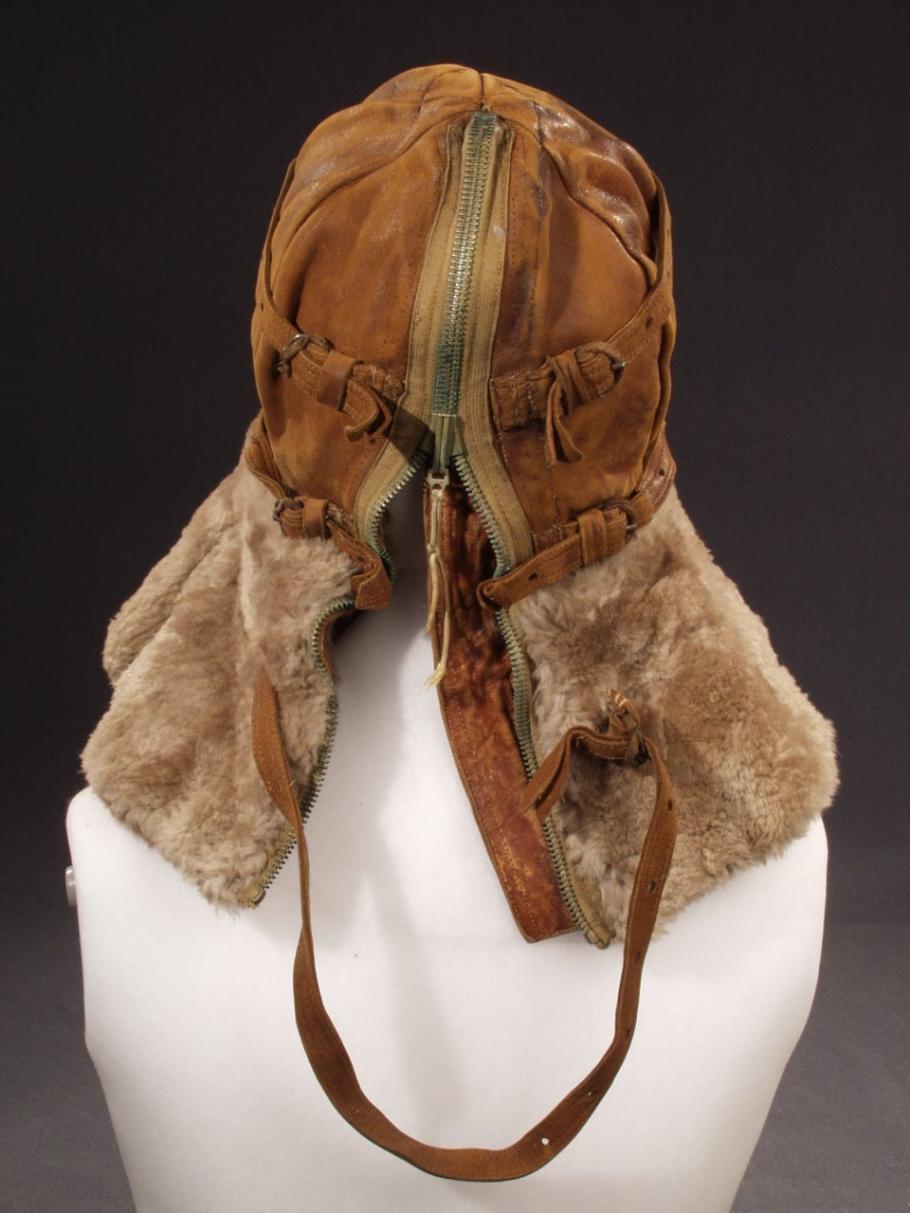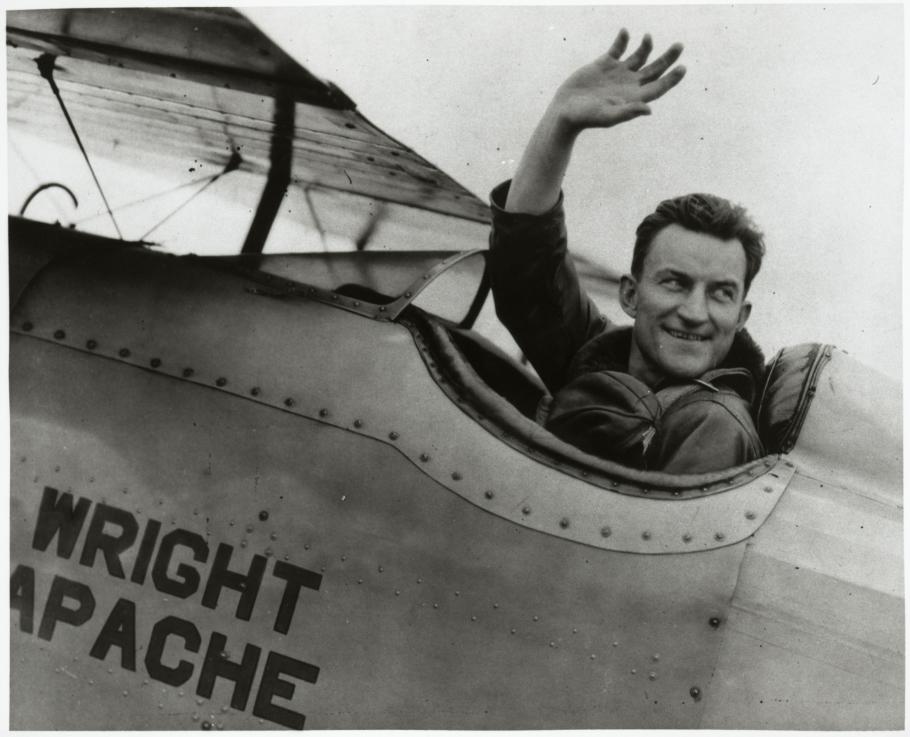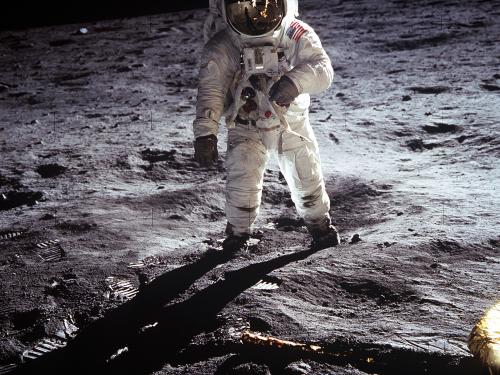
Apollo Soucek’s High Altitude Flying Helmet
Apr 28, 2015
What did Alaskan Natives contribute to the realm of high altitude flying? Their knowledge of the physics of warmth. When Navy pilot Lt. Apollo Soucek climbed in an open-cockpit Wright XF3W Apache airplane to a world record altitude of 13,160 meters (43,166 feet) on June 4, 1930, he was prepared for the cold temperatures he would endure. “I wore…a fur-lined leather suit, but nary of stitch of underclothes, the fur being next to my skin,” Soucek said in a first-person account in the September 1930 issue of Modern Mechanix. “Commander Frederick Ceres, flight surgeon at the Naval Air Station at Anacostia, D.C., figured this one out from the clothes of the Eskimos.” This leather and mouton fur helmet was part of his flight ensemble. Mouton fur is actually sheepskin that has been chemically treated so that it has a moisture repellent finish and looks like another type of fur, in particular beaver or seal. The helmet has a slide fastener down the back and upper and lower buckle adjustment straps. You can see it in the Boeing Aviation Hangar at the Udvar-Hazy Center in Chantilly, Virginia.
Apollo Soucek’s high altitude flying helmet worn on his record-setting flight on June 4, 1930. Soucek flew a Wright XF3W Apache fighter to a record altitude of 13,160 meters (43,166 feet) over Washington, DC. He wore this fur helmet to survive the flight in the Apache's open cockpit.
Apollo Soucek’s high altitude flying helmet worn on his record-setting flight on June 4, 1930. Soucek flew a Wright XF3W Apache fighter to a record altitude of 13,160 meters (43,166 feet) over Washington, DC. He wore this fur helmet to survive the flight in the Apache's open cockpit.
[/one_half_last] Over his eyes, Soucek wore a pair of electrically heated goggles devised by his brother Zeus. They were heated to prevent moisture inside the goggles from icing up, which had occurred on a previous high altitude test. Soucek withstood mind-boggling extremes in temperature during his record-breaking flight. He recalled it was well over 32 degrees Celsius (90 Fahrenheit) in Washington, D.C. when he took off at 2:18 pm from Naval Air Station Anacostia, “sweating under the tremendous burden of my heavy equipment.” When he reached the airplane’s maximum height, it was about -60 C or -76 F. “Fortunately I did not suffer greatly from the effects of the extreme altitude and bitter cold,” he wrote.
Lt. Apollo Soucek waves from the cockpit of the Wright Apache. Soucek flew a Wright XF3W Apache fighter to a record altitude of 13,160 meters (43,166 feet) over Washington, DC on June 4, 1930.
Describing the flight itself, he said, “I simply pulled back the control stick and then went straight up in the air until I reached the ‘ceiling,’ or maximum height of the plane.” A couple of times he achieved over 12,800 meters (42,000 feet), but “I couldn’t get it to stay there,” he said. This was not the first altitude record for Soucek. He broke two records in 1929, achieving 11,929 meters (39,140 feet) in a land plane on May 8, and setting a seaplane altitude record of 11,753 meters (38,560 feet) on June 4. In all instances he flew the Wright Apache. Soucek received the Distinguished Flying Cross for his “hazardous high altitude flights and experiments to develop and perfect superchargers, propellers, oxygen breathing equipment and protective clothing.” Soucek was a Naval Academy graduate and had a long distinguished career in the U.S. Navy, receiving the rank of vice admiral posthumously. He died July 12, 1955 and is buried in Arlington National Cemetery. Naval Air Station Oceana in Virginia Beach is named Apollo Soucek Field in his honor.
Related Topics
You may also like
We rely on the generous support of donors, sponsors, members, and other benefactors to share the history and impact of aviation and spaceflight, educate the public, and inspire future generations. With your help, we can continue to preserve and safeguard the world’s most comprehensive collection of artifacts representing the great achievements of flight and space exploration.




